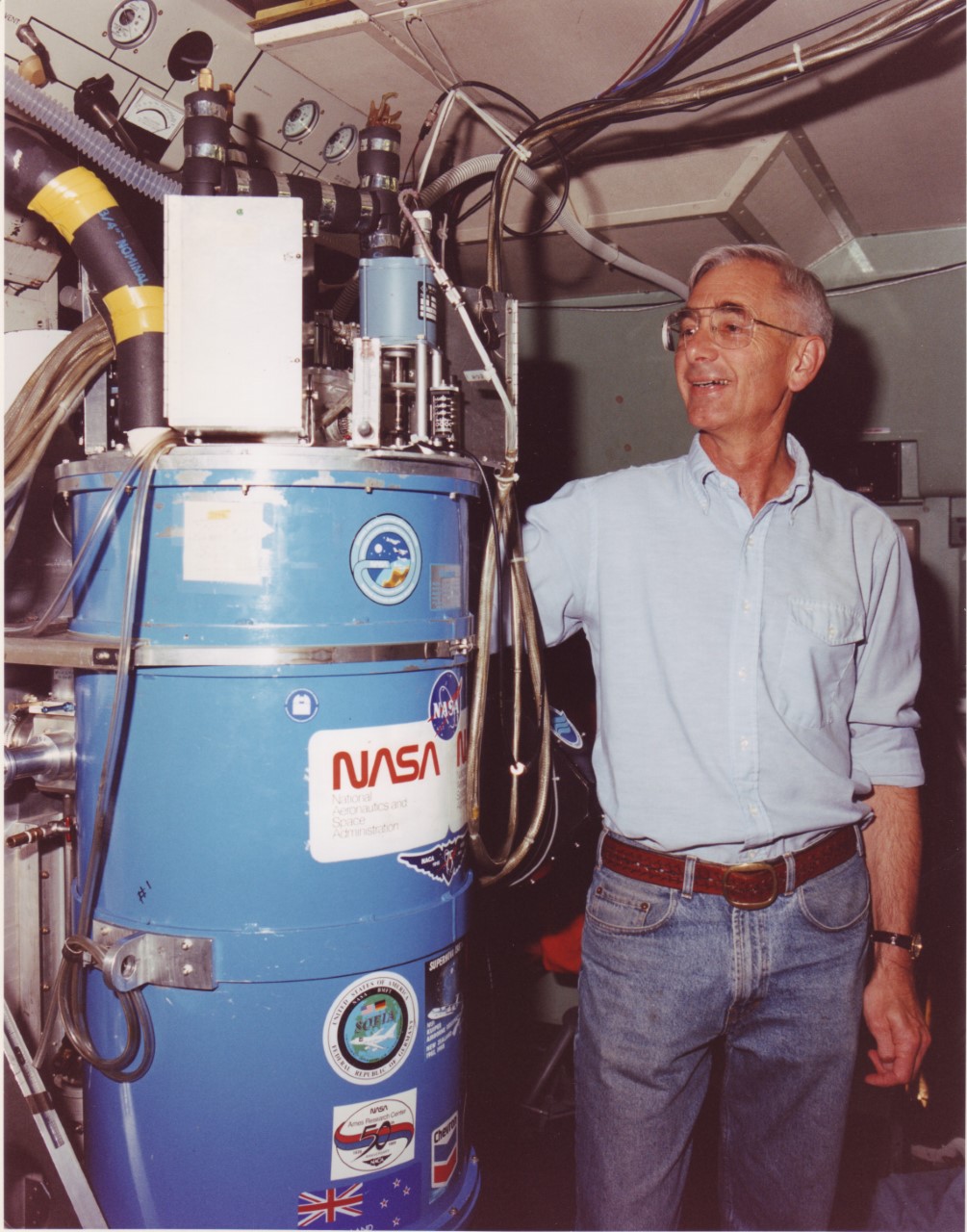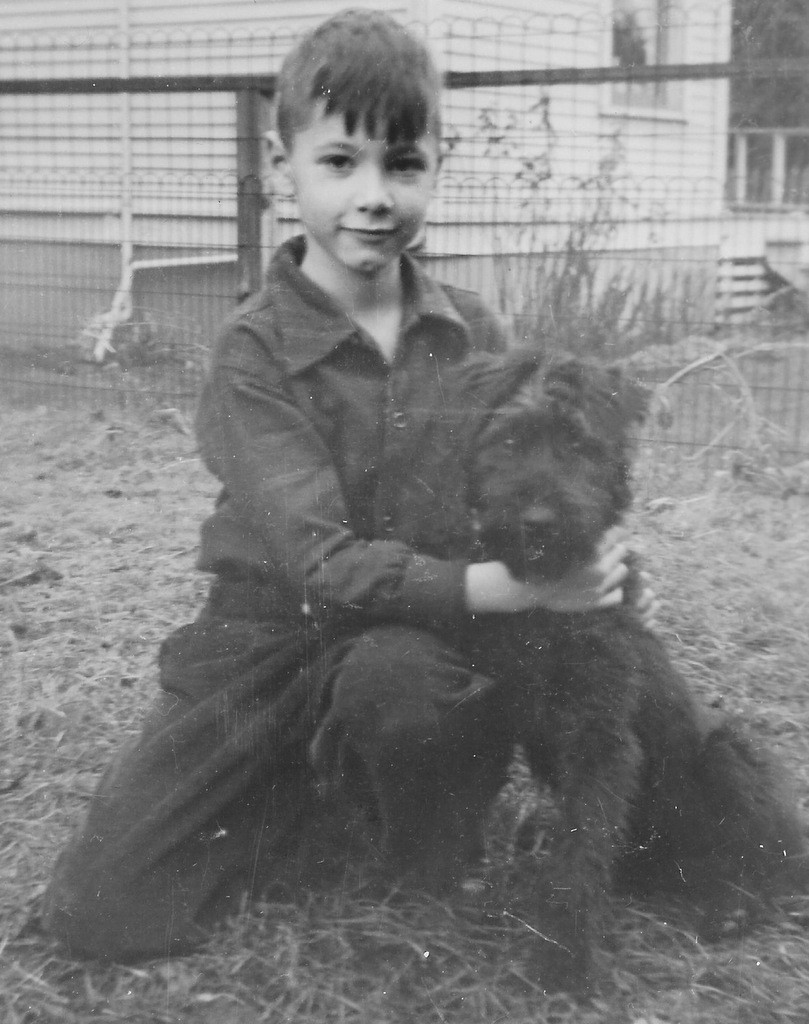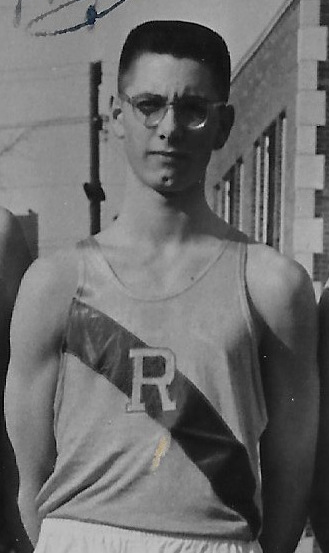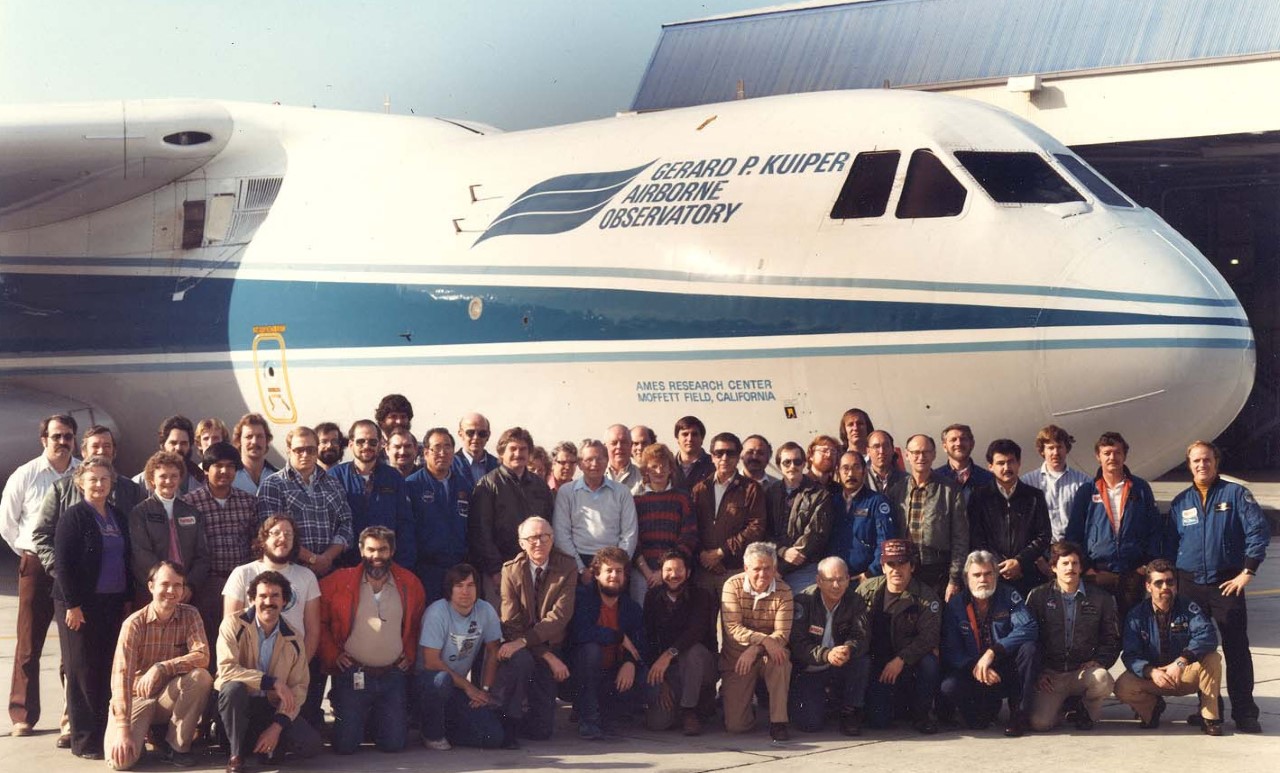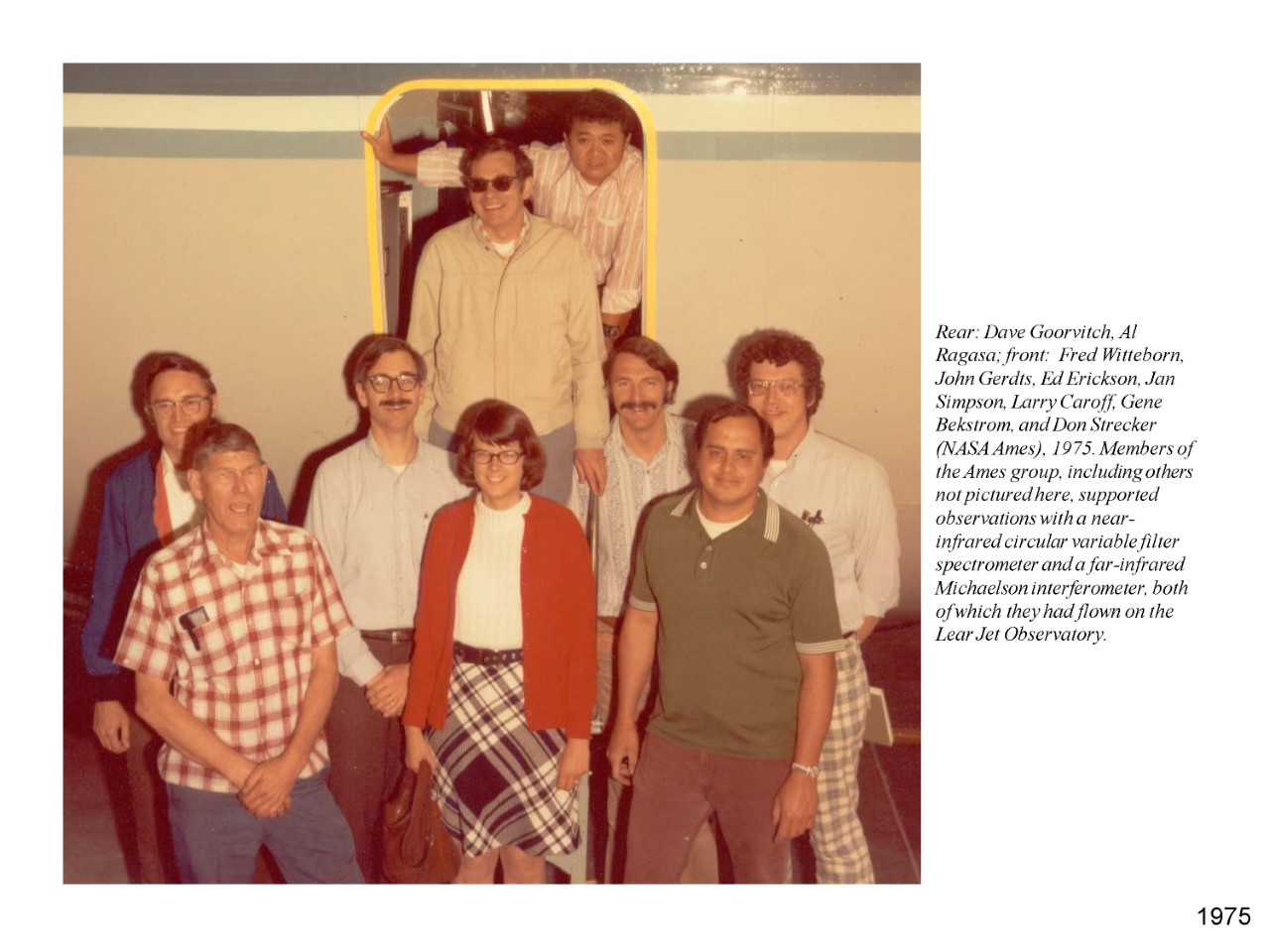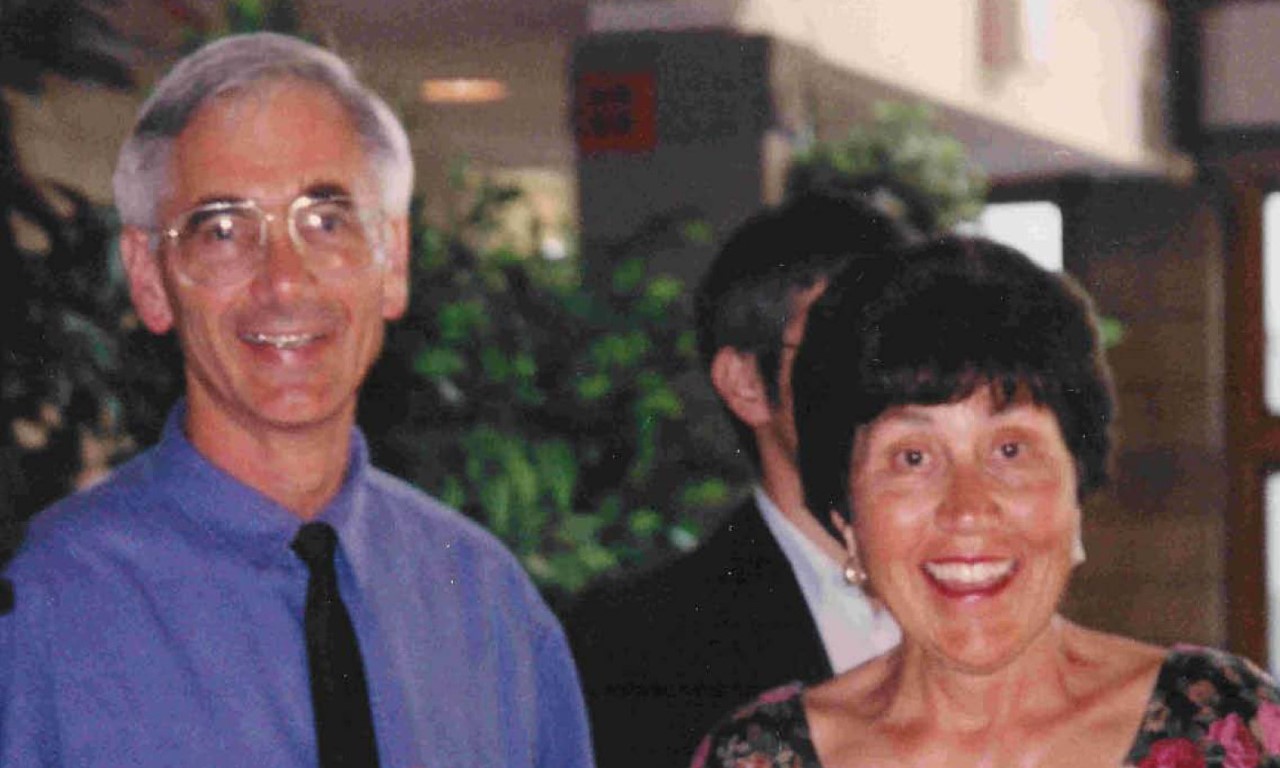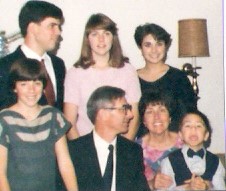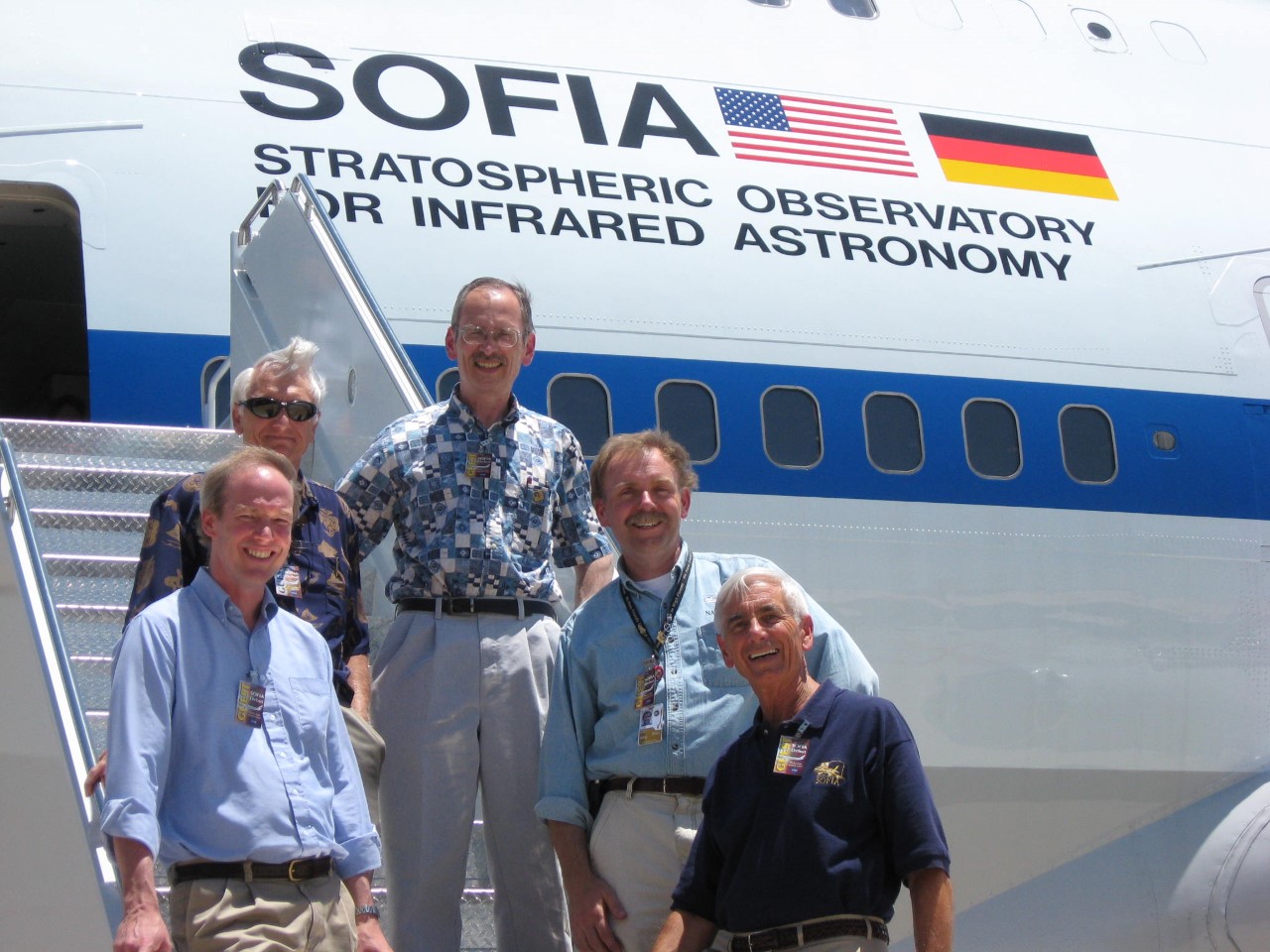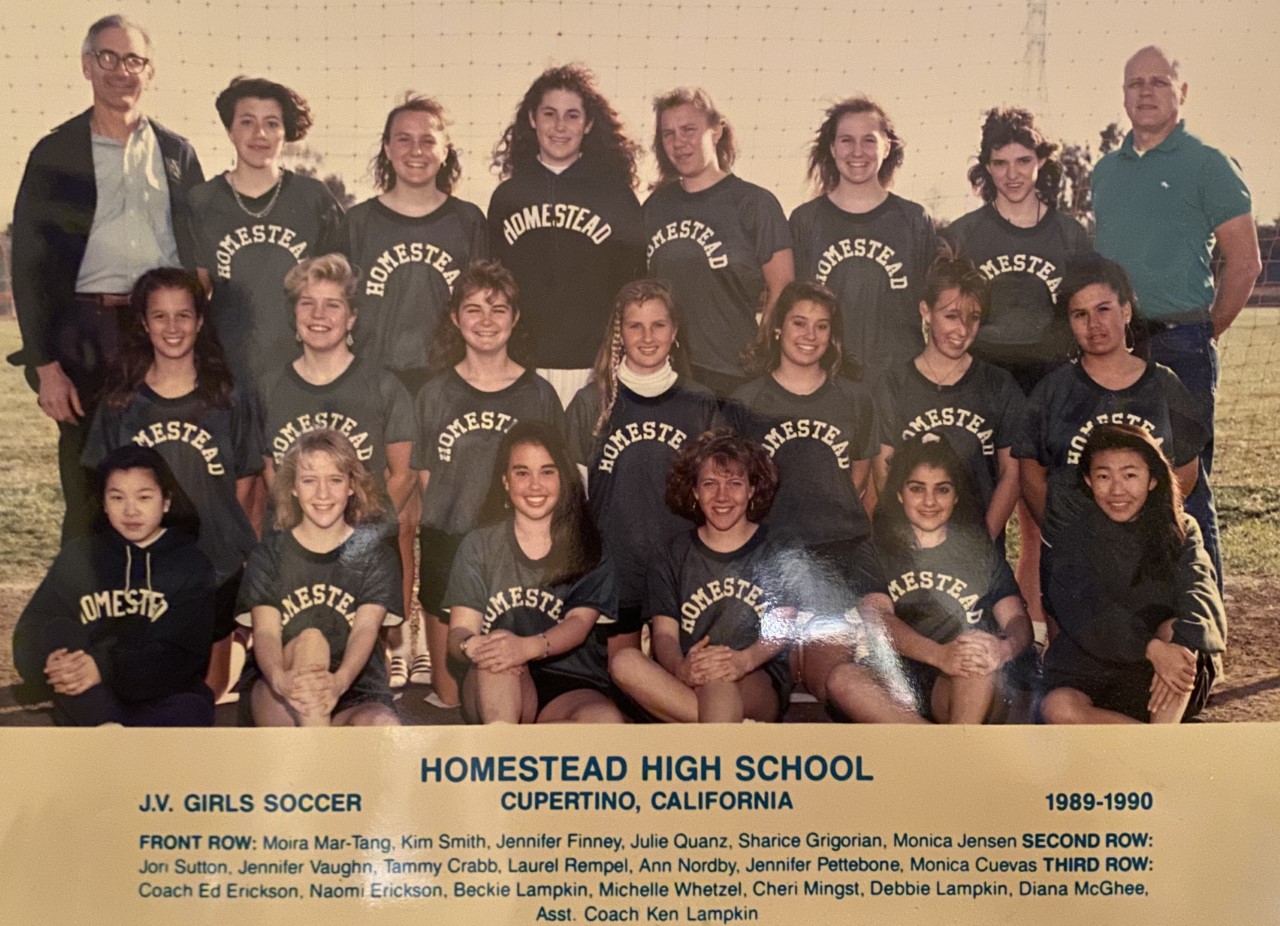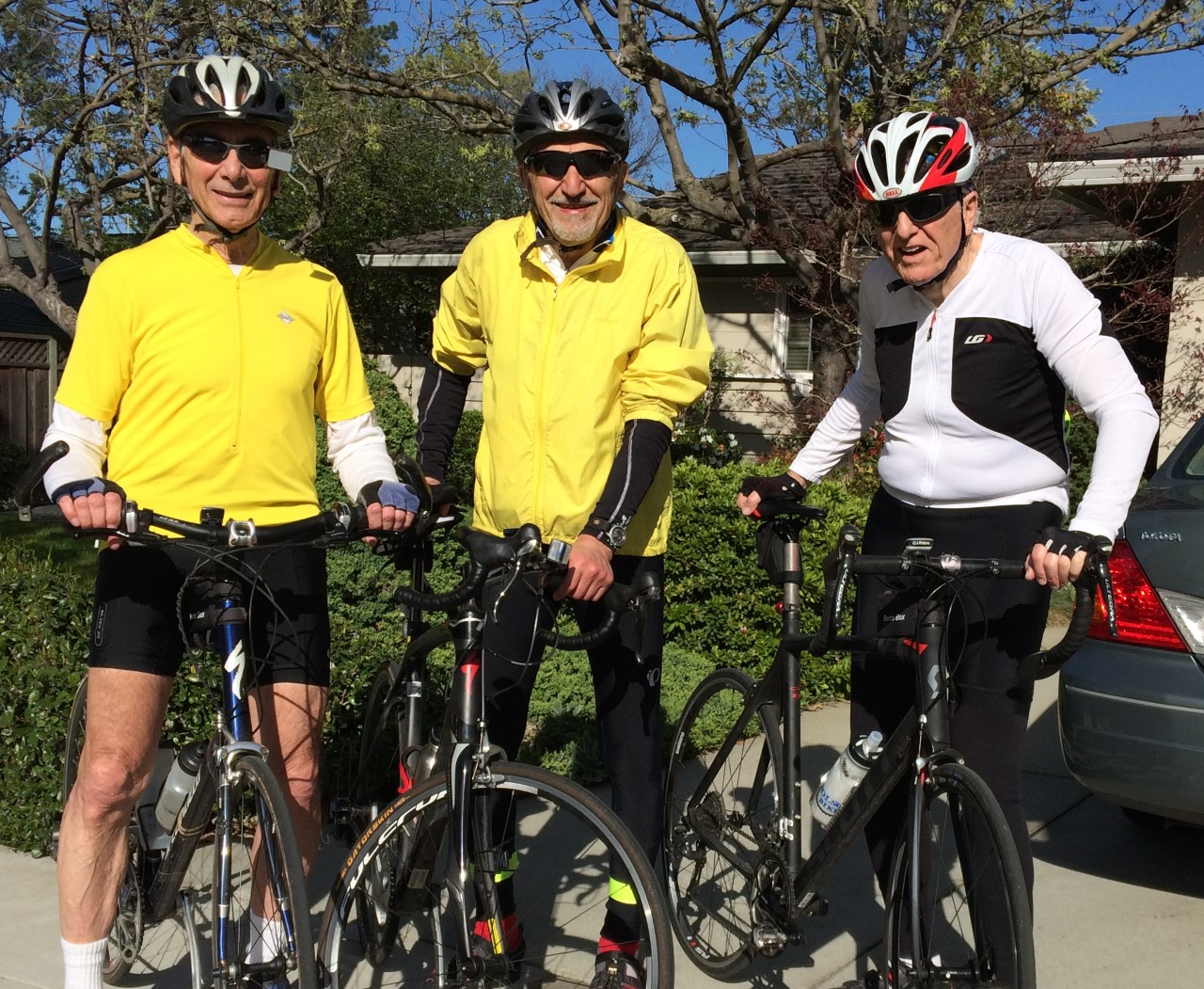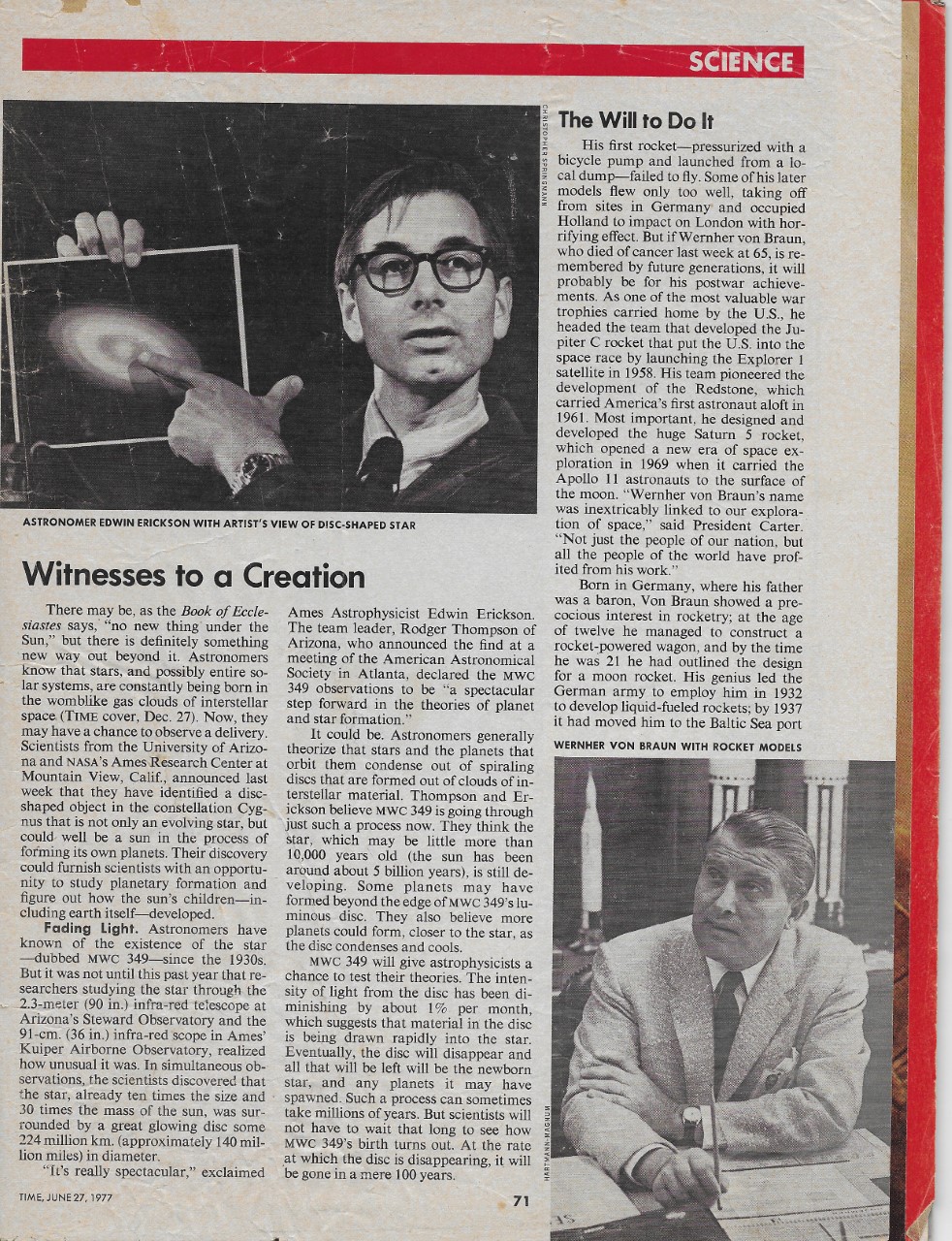We usually start out asking about your early years, where were you were born, where you grew up, a little bit about your family at that time, where did you go to school and specifically if there was anything about those early years that might have pointed you toward the career that you’ve had here at NASA.
Well, thank you Fred and Sara, it’s very nice of you to organize this series of interviews. I feel flattered to be included. I was born in 1934 and so was seven when the war started. My dad was an air raid warden; we had a victory garden. We got flashcards at school with silhouettes of Japanese airplanes on them.
Were you on the coast?
Yes, Seattle. Seattle is where I never grew up you see! (laughs) My family lived there, and life was good. Anyway…
The Japanese did send balloons over at one point, they tried to start forest fires.
Well, that’s what they say, but I never did see any of them. There were also concerns about attacking submarines. I vaguely remember when the president came on the radio when he said that it was a date “which will live in infamy.”
Oh, so you heard that one?
Yes, well we had a radio you know. The family, my parents, brother (three years older) and aunt and uncle I think, tuned in.
Did you even at the age of seven know what that meant?
Well, I knew that it was something really important because of the grownups’ serious reactions. It was a Sunday. Anyway, later I attended Roosevelt High in the University (of Washington) district, where we lived. It was a good high school. My experience there was terrific: many activities, on the track team, many friends. I remember when I took physics, I was so impressed that mathematics could describe and explain physical phenomena. And for me, that’s still a mystery. Not only does it do that, but math can predict things. Einstein said, “there’s nothing more interesting than a mystery”. Mathematics is the language of physics and that’s amazing. Still a mystery for me.
In addition to being an air raid warden was your dad science-minded or your mother?
No, neither of them was. My brother, with whom I had little interaction, was I guess. He had his own friends so I kind of grew up by myself a lot.
There were just you two boys?
Yes, two boys. And I would come home from school, I’d make a PBJ sandwich and listen to Jack Armstrong the All American Boy and The Lone Ranger on the radio. I had a dog, Kelly, and I would roller skate up and down the sidewalk or play with the dog (laughs). Or climb the big cherry tree in our back yard. I had a very nice life there growing up.
Did you read the Tom Swift books?
No, I don’t remember reading anything. Maybe the Hardy Boys.
No, I never thought about space at all. Anyway, I got interested in physics in high school. My dad and my mom, of course, had to go through the depression in the ‘30s. My dad had wanted to go to college, but he couldn’t afford it. My parents were lucky to have jobs in the depression. But Dad was interested in college education and he said “You boys really need to go away to school,” so my brother went to MIT and I went to Stanford.
Did you choose Stanford, or just apply to a number of colleges and got accepted by Stanford?
I kind of chose Stanford. I was interviewed by a couple of guys from Yale and considered a couple of other places, I think. Stanford was closer, on the West Coast, and it was supposed to be a really good school and it was affordable at the time (laughs).
And you knew going in that you wanted to major in physics?
No, I didn’t for sure, but in my freshman year, I took engineering physics and had some really good professors there. Stanford has a very good physics department, with some Nobel prize winners and excellent profs. And I realized I really did like physics. There was a guy who was a postdoc there, who had gone to school with my brother at MIT, and he told me “Oh you’ve got to major in physics!” (laughs) And so I did! It was hard, I wasn’t a brilliant student, but I was OK, and I really enjoyed the classes I had there. It was a good undergraduate program.
That would’ve been in the mid-’50s or so?
Well, I graduated from high school in 1953 and I was in the Stanford Class of 1957. We called ourselves the “57 varieties!” (laughs) I applied to graduate school in two or three places, but I got a really good offer at Stanford, so I stayed there for graduate school. I was in graduate school there when my parents died and when I met my wife Beth. She had also grown up in Seattle and also in the university district, and we had a couple of common acquaintances. My time in graduate school was really excellent. I had some good friends in graduate school, in fact, last night I was thinking about your interview here and I thought about some of the people that I did things with in graduate school and throughout my career. (Hands us a list of names).
I was going to ask if you had a part-time job while you were in school?
I had a part-time job as an undergraduate. I worked on the switchboard, a switchboard for the dorms, and I was a switchboard operator at night. There was a men’s dorm and a women’s dorm and so sometimes I helped to get people together, you know.
Did you listen in on their calls?
A little bit (laughs). It was good money and it wasn’t very busy on the weekends so I could study while I was doing the switchboard, and it was fun.
I do recognize a few of the names on your list, some of the older timers: Fred Witteborn, Dave Goorvitch, Gordon Augason, Larry Caroff, Dave Hollenbach, Mike Werner, Dave Scimeca.
When I got to working here, we had a wonderful series of master machinists in the Space Science instrument shop. I like hardware and building instruments, that was my game. The tradition of master machinists in the SS shop continues to this day with Emmett Quigley.
We’ve already interviewed him, so you wait for his to get posted. He is a fascinating character.
He is indeed!
And I have to ask if you recognize anybody in this picture? (Picture of KAO researchers, circa 1982).
(Laughs) Yeah, oh yeah! Well, there’s Gene Bekstrom (mechanical technician), Don Strecker (postdoc), Larry Caroff (scientist), Jan Simpson (scientist), John Gerdts (machinist), Fred Witteborn (scientist), Dave Goorvitch (scientist), and Al Ragasa (electrical technician).
And Ed Erickson!
And their names are all on there.
Yes, they are. I have to tell you, Mark Fonda recognized you! I did not!
I had a mustache back then, did I? Amazing! (laughs) Crazy, really crazy! Anyway, let me back up a little bit. When I was in graduate school, I did my Ph.D. thesis experiment scattering electrons from deuterium, using Stanford’s Mark III linear accelerator that was the precursor to SLAC (Stanford Linear Accelerator Center) which was under construction then. My advisor was Henry Kendall. The data probed the structure of the neutron. I built hardware, detectors, and electronics to detect elastically scattered deuterons. My wife Beth, whom I married about that time (1963), typed my thesis. I mean on a typewriter, full of equations with Greek symbols, mathematical symbols. It is a beautiful thing, over an inch thick. She did a great job!
Did she have a special typewriter to be able to type those things?
Yes, well, I don’t recall, and neither does she. She got all the fonts and whatever it took. It looks like it was done on a computer.
Was she studying at Stanford when you met her?
She wasn’t, she was teaching high school in Palo Alto. She is really smart. She was about 20 years old when she started teaching high school, was often mistaken for a student. Anyway, on the list of people who’ve helped with my career, and the first person who should be on this list is Beth. She supported my workaholic habits for years. We had five kids. They’ve all turned out to be good, responsible, and accomplished people. I owe a tremendous amount of my experience in science and the success of our family to my wife because she kept the home fires burning. She entertained my professional associates/friends, she cooked meals, kept us laughing with her good humor; she was super.
I finished my Ph.D. at Stanford after Henry moved on to become a professor at MIT. He continued doing similar experiments at SLAC, finding evidence for quarks, which won him a Nobel prize. We just didn’t have the necessary energy at the Mark III accelerator.
In graduate school, I especially enjoyed basketball with guys in the physics department. Another physics student and I got second in the school intramural track meet: he did the distances and the field events and I did the sprints and the hurdles. My experience at Stanford was excellent. I’m still in touch with many of my friends on the list I gave you.
There is something about you that we didn’t know!
Well yes. I earned an ROTC commission in the Army as an undergraduate. Active duty was postponed until I was done with my Ph.D., so I accumulated rank while in graduate school. I was promoted to Captain and Beth and I got married (in 1963). I served two years in the Army, going to Fort McClellan Alabama for basic training in the Chemical Corps: chemical, biological, and nuclear weapons. I learned all about how to kill people in lots of different ways. When done, the Army offered me participation in a program I had heard about here at NASA Ames.
That’s interesting because we were going to ask about the connection that got you from graduate school to NASA and I wondered if it had to do with proximity since you were at Stanford University because what you talked about in your education was physics, not having to do with aerospace or astrophysics.
No, but I knew Fred Witteborn worked here. He was also a Stanford physics Ph.D., although he did completely different things in graduate school. But I liked the area, my wife was here and I had friends here so I thought this is great, I’ll sign up for this. So I spent my whole time in the Army, aside from the basic training, working for Ben Beam in the Instrumentation Branch in building 213.
What brought your wife down here from Seattle to teach school? Did she have friends here or just like the area?
You know, that’s a good question, and I don’t really know! I’ll have to ask her that, I don’t know! I don’t know what brought her down here! [After inquiring, she told me it was the sunshine. After growing up in the Seattle climate, sun is a major attraction here.]
It must have been fate!
Yeah, well it certainly was (laughs). Anyway, I really enjoyed working in the Instrumentation Branch, I really loved it, I did some really fun things there. I collaborated on improving light- detection efficiency of a phototube using total internal reflection. A short-duration, bright light source for Schlierin photography in the wind tunnels was needed. Lasers were a very new thing at that time, but I knew a guy at Stanford who knew about lasers and he basically instructed me about how to build a pulsed ruby laser. I was able to build one that produced very intense nanosecond pulses. Building it was a great learning experience. I wrote a theoretical paper “Fringe Visibility in a Laser-Illuminated Interferometer,” which has got considerable attention. That’s something about physics, you never stop learning. And at the time, people here were pretty relaxed here about letting you choose what to work on. It was a fine time professionally for me.
At Stanford, I had met French physicist Michel Croissiaux. I contacted him and he offered me a postdoc position to work at the linear electron accelerator at Orsay, just south of Paris. I took it. My oldest son David was born here in California in January 1966, and we moved in April, to the vicinity of Paris. There I mentored a couple of graduate students, doing experiments with them, and built a relatively new type of particle detector, a spark chamber, which could locate the positions of particles traversing it. Michele was a professor at Strasbourg, so he was rarely in Orsay which left me kind of running the group there. The accelerator worked really well, and I met some good people there. I bought a secondhand Peugeot from the Administrative Director of the lab. Because David was such a mellow fellow, we thought this childrearing was really overrated! (laughs). So, we decided to have another child promptly: our daughter, Aimée, was born in Paris in 1967. Life in France was difficult for Beth because she didn’t have any kind of a support group. Happily for us, she spoke French well — much better than I did — so she could communicate effectively, although French society is pretty aloof.
A friend, Roy Rand, I had known at Stanford and his family came to visit from England. He and I got to talking about physics and the experiments that we were doing, he at the Daresbury Electron Synchrotron in the north of England. With its higher energy, I could extend the work I was doing at Orsay. So, I wrote a proposal which got accepted. It required a lot of support from the French because it used a massive magnetic spectrometer which had to be shipped over to England to do this experiment. We moved to England in the summer of 1968, to do backward pion (π+) photoproduction at Daresbury. The emergence of the idea of quarks as fundamental particles was just emerging at that time and it was important to see how some of the physics worked out with the quark theory.
After two years in France and then two years in England where our daughter Bonnie was born in 1968, Beth was ready to go home — actually after the first month in France! But she was a stalwart. Before we left France she was pregnant with Bonnie. Typically the French think you should have only two children, separated by several years. In a grocery shop there when Beth was pregnant with Bonnie and we had David and Aimée in tow, the woman at the counter looked at these two little kids, then at Beth’s big tummy, and then at me and said “Villain!” (laughs)
Wow, that’s a different culture!
Well, yes, very contrasting cultures. The English were welcoming and friendly. It was a real pleasure getting over there. We enjoyed our experience in England. We made some good friends there. The French team would come over for runs on the accelerator and the experiment worked out quite well.
Did you say where in England?
The nearest community was Warrington, between Liverpool and Manchester.
One thing that happened there in summer 1969, in July, NASA was sending these guys to the moon on Apollo 11. In the middle of the night there on the 24th, we were taking data. The engineers turned off the accelerator around midnight to watch the moon landing. (Accelerators run at night because of the radiation levels.) Everybody went to the control room (engineers, technicians, and experimenters) to watch on the black and white TV. This was a hard time for America’s international image because the Vietnam war was going on and the Europeans did largely oppose it, and of course many here in the U.S. did too. As Armstrong stepped on the moon, one of the English techs said: “Blimey, the Americans can do anything!” (laughs), and another one said “That’s it. I’m buying an American refrigerator!” (laughs heartily).
We came home in the fall of 1970. I didn’t have a job. I had written a proposal to the National Research Council (NRC) to work as a postdoc at NASA to build an imaging x-ray detector. Fred Witteborn was heading the Astrophysics branch which had been recently formed by the direction of (Center Director) Hans Mark. He had recognized that this infrared astronomy game, in particular using Ames’ airplanes, was going to really be a big thing. Much infrared light from astronomical sources is stopped in the Earth’s lower atmosphere but is accessible from aircraft altitudes. Although my NRC proposal had been accepted, Fred invited me to join the IR program in his branch. I abandoned my proposal and we started trying to figure out how to do infrared astronomy. Now, I had never had a class in astronomy. Fred was an amateur astronomer and he knew a lot, but we all had a lot to learn. We got started using the Learjet. Two men, Frank Low and Carl Gillespie, had built a simple telescope for the Learjet, to do infrared astronomy in the far-infrared (FIR: roughly 100 times the wavelength of visible light), with the early bolometer detectors that Frank Low had developed. That was very promising, but their telescope really wasn’t very suitable for general use. So, I built a telescope with two engineers, Mike Dix (electrical) and Maury Hitchman (mechanical); fabrication was done in the main and SS Ames shops, Dave Goorvitch (scientist) helping with documentation. We got the telescope working really well. Scientists from the Astrophysics Branch and from several university groups used the Lear on many missions.
The reason that infrared astronomy lagged behind all other astronomy disciplines in the early 1970s, was that the detector technology was really very, very, basic, primitive. Using a simple single detector (no arrays), we could only detect the brightest objects. Using the Learjet, we (branch members) measured a spectrum of Venus. Jim Pollock, who was an SS theorist, modeled spectra of different cloud aerosol candidates. Gerard Kuiper and Fred Forbes (University of Arizona), had measured the spectrum of Venus from the Ames Convair 990, and shown the clouds were not made of water, contrary to widely held presumption. Jim deduced from our data that the most likely aerosol candidate in the Venus clouds was sulfuric acid: that’s the battery acid in your car.
With help from technicians Greg Buck and Geno Beckstrom, machinist John Gerdts, computer programmer Jim Panteleo, Scientists Jan Simpson and Gordon Augason, I built a Michaelson interferometer to work in the far-infrared. (I had bought a computer which operated the interferometer and Fourier transformed the data to get the actual spectrum, the intensity versus wavelength.) With it, from the Learjet we (and with Fred and Larry Caroff) measured the first spectrum of a giant molecular cloud which had stars forming inside of it. I constructed a really simple thermal model to interpret how the cloud structure could produce the spectrum we observed. So we made good use of and had a lot of fun using the Lear. At that time (the early 1970s) the C-141, the Kuiper Observatory (KAO) was being developed.
I got to know some of the scientists who came to use the Learjet telescope because I was responsible for keeping it working properly. In particular, I met Martin Harwood and Jim Houck from Cornell. Fred, postdoc Don Strecker and others used it for near/mid-infrared observations of stars. The Lear telescope turned out to be a really nice learning tool as well as a productive platform for us in infrared astronomy.
Was Craig McCreight in the picture at this point?
No, not to my knowledge. In 1974 the Kuiper observatory started flying. We had been trying unsuccessfully to measure the spectrum of Jupiter with the Michaelson from the Lear. When you start out with very poor detectors you look at the brightest objects you can see, and that would be Venus and Jupiter. Charlie Townes, the UC Berkley professor who won the Nobel prize for inventing the laser, was doing similar research, as was Judy Pipher (U. Rochester). We were all three trying to measure the spectrum of Jupiter from the KAO, to see the predicted FIR methane bands. We put the Michaelson on the KAO telescope and bingo! We (including Don Strecker) got the spectrum! Dave Goorvitch was able to model the atmosphere, fitting our data beautifully, to probe the atmospheric structure, cloud layers, etc.
As an aside, I must recount that with the help of my postdoc Don Strecker, in the summer of 1974 I was building a second story on my house in Sunnyvale. This was to make room for our fourth child, Naomi, then in utero. She was born in December. (Don was experienced in construction, so was a big help, enjoyed the project — I didn’t have to coerce him.)
Is that because the Kuiper flew higher?
No, because it had a bigger telescope. The Lear could ascend directly to 45,000 feet (FL450), but the KAO observations were typically from FL410, reaching higher altitudes only after hours of burning off fuel.
Oh, I thought you said you put the instrument from the Learjet on the Kuiper.
Yes, we put our Lear instruments on the bigger KAO telescope. The Lear telescope was a foot in diameter, the Kuiper telescope was 3 feet. So, we had basically nine times more collecting area. Right away we knew we had a real jackpot in the KAO. We started observing objects in the interstellar medium, typically molecular clouds where stars are forming. The stars are inside, obscured at visible wavelengths by the tiny dust particles in the cloud. The grains absorb the visible stellar radiation and re-radiate it at long wavelengths, and that’s why the clouds look cool. We did some really nice work there. My first postdoc, Dave Hollenbach (who later became a Civil Servant), was a theorist specializing in the interstellar medium, a perfect fit for our observing program. Another excellent postdoc, Alan Tokunaga, worked with me to measure and interpret spectra of luminous nebulae that are powered by massive hot stars in the interstellar medium using the Michaelson on the KAO.
Can you comment at all on the value of this to NASA’s strategic vision and why taxpayers should want to support the kind of work that is done in theoretical and observational astrophysics?
Well, that’s a good question, Fred, let me back up a little bit. I mentioned my paper on Laser-Illuminated Interferometers. It turns out that light from a particular type of laser is coherent over kilometers. With that paper, people could see that you could do accurate surveying with lasers. And that was probably the most practical thing that I ever did (laughs). However, it’s a small example of NASA’s research and technology developments that benefit society. Another example is the CCD (charge-coupled device) cameras that inhabit everyone’s cell phones – early development was sponsored by NASA for space astronomy.
So: why should the public be interested in astrophysics? OK, that’s a really good question. You know, the progress of humanity is not just better bodily nourishment. The progress of humanity depends on nourishing the ubiquitous curiosity of the soul. As Einstein said, “Nothing is more interesting than a mystery.” And space is full of mysteries. All of the astronomy research that’s described in the media is in the public interest. It expands people’s consciousness because of their curiosity and feeds their desire to comprehend their place in the Universe. Think of the Hubble images. Their remarkable beauty, variety, and significance awe and inspire people, wake up their brains, and their kids’ brains. Astrophysics contributes in this way to the advancement of humanity.
Regarding paying taxes for astrophysics research: Historian Will Durant distinguished a society from a civilization: the latter allocates some of its assets to supporting enduring cultural activities beyond physical necessities. So, the essence of humanity’s potential — compassion, beauty, and knowledge — is enlarged by support for the arts and sciences, including astrophysics. Furthering this cause, establishing a legacy of which we can be proud, is something we should be happy to help pay for.
That’s a good answer. And I think you’re right, it nourishes and awakens in people questions like: What is out there? How do we fit into that? Where did it all come from? What does it mean?
That’s right. How did we originate? How did we get here? And where are we going?
And are we alone?
Yes, and are we alone? People have been asking those questions for centuries, for millennia.
And now we have tools that can help peel back some of the mysteries. What’s interesting to me is that we sell an instrument based on what we can learn from it, questions we can answer with it, but it always turns out that it might answer some questions but it always generates more questions.
That’s right, it’s a self-perpetuating game we are playing here, right? And that’s all the better for humanity. People go from one question to another. Recently people have been examining the shadow of a black hole imaged using radio telescopes. Marvelous stuff! You know I give talks on astrophysics to public and school groups. I get lots of good questions and I really enjoy answering them. I have two granddaughters in Australia and I’ve talked to their classes down there. I have a good friend here who worked with me but now teaches AP physics in high school. I talk to her class every year. People are really interested in the things that we do, but many are not awfully practical. For example, the FIR, is radiation from objects that are about 60° Kelvin; that’s cold beyond our normal experience.
You’re retired now but we usually ask a question, when you were working here full-time, what did you like best and least about your job, and what a typical day was like for you, if you want to comment on that.
I’d be happy to comment on that. I was in the Astrophysics Branch my whole time here since completing my Ph.D., and Fred (Witteborn) was the branch chief for a long time. There was a lot of variety. In addition to doing research, we were thinking about new facilities. Fred really originated the idea of SIRTF (the Space Infrared Telescope Facility) that became the Spitzer Space Telescope, so we did interesting calculations about that. I got interested in promoting airborne astronomy. As the Facility Scientist for the KAO, I had a lot of interaction with many of the users who came for the 21 years it was operating. In that job, I built hardware, provided software, and developed techniques that would help KAO users make their measurements. So that was fun, that was a lot of fun, interacting with all those people. There was terrific support in the SS shop here. Not just technicians but machinists: Bob Zeiger, Dave Scimeca, John Gerdts, those guys did fantastic work, so great, building hardware. That was one of the things I really enjoyed here: designing and building instruments to make measurements. It was challenging because what we were doing was pretty unique.
We built the first really big spectrometer for the KAO. Much help was provided by Bruce Pittman (project manager), Scott Matthews (optics analysis), Bob Zeiger (machining), and consulting by Martin Harwit and Jim Houck (Cornell) mentioned earlier. The instrument, the FIR Cryogenic Grating Spectrometer (CGS), turned out to be very popular. With Mike Haas, engineer Jim Baltz and for a time postdoc Juergen Wolf, technician Geno Bekstrom we operated and upgraded it for the last 14 years of KAO ops. I kept learning more about the science because I could talk with really good people here, notably Bob Rubin, Jan Simpson, and Dave Hollenbach. With their participation, we planned and made many significant and first time measurements using the CGS. For me the most enjoyable part was designing instrumentation, getting it things to work in the lab, and flying to make the observations. And working with the people, such good people. Mike Haas, a fantastic guy, was basically the instrument scientist keeping it calibrated and documenting its performance, keeping the data acquisition system humming, and analyzing data.
BTW, computers evolved enormously from 1971 when I started at Ames until 1995 when we retired the KAO. The first computer I got was a military computer called a Rolm, and we programmed it with switches, digital switches. I think it had 8 Kb of memory! We flew that with the Michaelson Interferometer on the Learjet, then on the KAO. Then we had an Apple IIE for awhile with a specialist programmer Glenn Boozer. Finally, we got PCs which were a bit more manageable.
A final aside: In 1979, a son, Jesse, joined his four siblings and Beth and me. With five kids on one Civil Service salary, we lived frugally. I drove and repaired our old cars, we rarely went out to eat, etc. But we managed, thanks largely to Beth’s management at home.
So, the computer switches even pre-dated punch cards?
Well yes, historically, but no, no they didn’t for this computer. But we couldn’t use a punch card reader to program the early machines.
As the computers and the ease of programming them improved, the scientists were able to take over their operation of the instruments and the analysis of the data. Again, working with fine, intelligent, talented, motivated people was a great pleasure. Sean Colgan joined our team as an NRC postdoc and later became a Civil Servant. Two Stanford graduate students, Phil Duffy and Angela Cotera, got their PhDs with my program.
We measured a lot of spectral features that had never been seen before. We made the first detection of iron created in Supernova 1987A. We deduced the presence of hot stars in the vicinity of the Galactic Center, based on our FIR spectral features measured from the KAO and Bob Rubin’s model of ionized nebulae. The existence of hot stars there was a very unpopular idea at the time, but stars are too faint in the FIR to be detected. A friend, Michael Burton (UNSW Australia), encouraged my suggested collaboration to observe the Galactic Center in the near-infrared from the Anglo Australian Telescope at Siding Spring. Our proposal was accepted, so Angela and I went down there, and, using an instrument that they had developed, found the most luminous cluster of hot stars in the galaxy, near the galactic center. She used those data as the basis for her thesis.
So, you mentioned that the Kuiper flew for 21 years. And then when it ended part of the reason was that they could take that money and apply it to the development of SOFIA?
Right. The primary reason actually. The KAO was working better than ever. Let me show you these two books.
- NASA’s Kuiper Airborne Observatory, 1971-1995: An Operations Retrospective With a View to SOFIA (NASA/SP-2013-216025) by Edwin F. Erickson and Allan W. Meyer.
- The Making of SOFIA, The Stratospheric Observatory for Infrared Astronomy, 1985 to 2016 (NASA/NP-2016-09-842-LaRC) by Nans Kunz, PE
I was the facility scientist for the Kuiper (KAO) and flew on it for 21 years, the whole lifetime. The flights were really exhilarating and sometimes exciting.
They were exciting! I read the piece you wrote about when you took off one time and two engines quit.
(Laughs) Yeah, well that was in Samoa. The flying was indeed fun and exciting. You know it was interesting, my wife, when we left Europe and I got a job here at NASA, she thought “Good, he won’t be working at night anymore.” (laughs).
And that’s about the main time that you work!
Well, yes, accelerators run at night. Anyway, the whole time with KAO was an exciting period in my life. I can’t imagine a more appropriate professional experience than the one I had. I think anyone who has a similar connection between his inclinations and his job is really fortunate, very, very fortunate. By 1980 we could see that this airborne astronomy game was really productive. So, I began to promote a bigger facility. The user groups from the Kuiper were located all over the country. We started thinking about what this would look like. We first called it the Large Airborne Telescope. Carl Gillespie coined the name SOFIA = Stratospheric Observatory for Infrared Astronomy. I organized a SOFIA Technical Workshop in 1986, and we got the Germans who were interested in collaborating to come to that. I got to know a fellow by the name of Nans Kunz. He became one of my best friends. We had breakfast together every week when we were both in town, here at the cafeteria, for about 22 years. He was the Chief Engineer on SOFIA, responsible for assuring the observatory would work. I was the Project Scientist, responsible for defining its requirements. We did a lot of work together on SOFIA, not only here but in Germany where we went a number of times. We had a really great connection in getting SOFIA built. Nans gave me a lot of good comments on drafts of the KAO book.
Then he wanted to write a book about SOFIA. He had started working on that when he became aware that he had ALS and he really worked hard to get it done, but he wasn’t able to finish it before he died in early 2016, so I finished it for him, with Larry Caroff and his caretaker. Nans was a great guy. I had coached a lot of soccer and so when his kids were in junior high, he asked me to coach their teams, which we did together. We got to know each others’ families, went on vacations together. That was really a wonderful time in my life as well, working with him and the rest of the SOFIA team. He wanted to be sure that people understood the engineering on SOFIA but he also wanted people to know that it wasn’t the engineering that caused SOFIA development to be far over budget and way late. He listed as lessons learned the causes for the delay and the cost overruns: largely upper management, headquarters management decisions. And that’s not a very popular fact at headquarters. For example, the transfer of SOFIA to Dryden (now Armstrong) to complete the development and host operations. He pointed out that this decision was very deleterious to the program – it’s all in his book. I got the book published at Langley because he was the NESC (NASA Engineering and Safety Center) engineer at Ames. They did a great job formatting and publishing it. I’ve distributed over 400 copies.
Is that still available?
Unfortunately, NASA has taken it off the website, so those lessons learned are not available to everybody. Management wanted the book redacted with their corrections, and they haven’t done that. I finally talked to the guy who is supposed to be doing it. He’s been overwhelmed so I’m going to try and do that. Did you see SOFIA when it was out here last month?
(Sara) Yes. (Fred) I supported that project when I was in the space projects division for several years, I was up in San Francisco when they had the plane up there in the United hanger and then also, I went to Waco a couple of times while they were doing the modification. So yes, but I missed this last one because I was out of town.
Well, I’m glad you got to see it, Sara, it’s an impressive machine. Nans got to fly on it once and his experience is in the book. It’s a tremendous gratification for me because I worked on it for 2 ½ decades, at least. And it works! It does what we said it would do. It’s really a major achievement. So, I got a lot of satisfaction from the effort. I got into astro-politics because of it. It wasn’t a terribly popular idea at headquarters, but we had users from all over the country so we targeted the people who had representatives on the appropriate congressional committees, Authorizations, and Appropriations. And I talked with our local representative here, Anna Eshoo, who was a strong supporter. Jackie Davidson helped a lot with that. She had gotten her Ph.D. on the Kuiper working with Roger Hildebrand (U. Chicago) after which she came here to work. She was basically my deputy on the SOFIA project for a long time.
It’s a marvelous accomplishment and legacy, that’s for sure.
Well, the astro-politics was a whole new field for me.
Another thing that we ask people because you’ve told us about your career and your science interests and so forth, but either during that time or now, what do you do for fun?
(Laughs) That’s a good question! Well you know, I coached a lot of kids in soccer including two years at the high school for one of my daughters’ teams – a great experience. I had to get up at five in the morning to get some work done because I had to go and coach soccer in the afternoon every weekday. High school coaching is a serious business. After coaching teams for my fifth child, I didn’t have any more kids to coach, so I started playing soccer with a bunch of Russians down in Palo Alto on Saturdays. I played down there for at least a decade, and that was a delight.
The Russians are serious soccer players.
Well, yes, and they are very talented, you know. I had started playing soccer when I was living in France, with my graduate students, when I had no idea about the sport, but I had learned a lot in coaching. These Russian guys were very skilled, but they smoked and drank beer. And I was in pretty good shape so I could play with them; just had a blast. And of course, I got into coaching again later for Nans’ kids and then for Tim Lee’s youngest boy. I really always enjoyed soccer. I can’t do it anymore. Although, actually, I just played a little bit of soccer with my daughter Naomi and her two girls who are 8 and 11, down in Australia. We played a little two on two, and with kids that young I could still play on their level. (laughs) But my daughter Naomi is an athlete. So that’s the last time I touched a soccer ball. And I really enjoy cycling. Larry Caroff lives near me. He and I cycle with Stanford astrophysics professor Vahe’ Petrosian almost every Saturday when we’re in town. Cycling is really, really fun.
I’ve seen you bike in to go to the picnics that we have.
Yeah, I often do that, cycle in, yes. And then I’m really enjoying, and I’ve been doing this almost 10 years now, ballroom dancing.
That’s right we were going to ask you about that because you mentioned that you read about it in Ella’s interview, about the tango.
Oh, yeah! I got started here. I was having breakfast with Nans and a friend, who recommended the ballroom dancing the classes here at the Ames Rec Center on Tuesday afternoons. So I started about ten years ago when I was already retired.
And when I’m cycling with my friends, we talk about physics, we talk about sports, and more and more we’re talking about geriatric health issues. And they’ve said, “Ed, you’ve got to stop this ballroom dancing because you get up in the morning to go cycling and you’re all tired out from ballroom dancing!” (laughs)
Burning the candle at both ends!
I told them “Look, guys, if I have to give up one or the other it’s going to be a hard choice!” But I’ll tell you one thing: ballroom dancing is something where you can get a woman to do what you want, and she likes it! (laughs)
That is good! Did you make that up?
I did!
You also mentioned tango, is that part of the ballroom dancing?
Oh sure! Yeah, I really enjoy tango. You don’t find many women who can actually do the tango. I do American tango. I tried a little Argentine Tango in Australia where it’s very popular, but it’s not so common here. I go dancing about four times a week.
With your wife?
No, she’s had trouble with her knees, but when we lived in England, we did a little ice dancing; we actually learned to do a little tango on ice. She was a good sport and we had fun – stabilizing ourselves by hanging onto each other you know, but now she doesn’t do dancing really.
Something else I enjoy is working on my house, Fred, where we’ve lived since 1971. You’re always thinking of improvements you want to make. Lately, Beth wanted a hot tub, but you can’t put in a hot tub until you have an electrical panel that will handle 200 amps. And so, I’ve installed the electrical panel, and am almost finished putting in the hot tub.
Another enjoyable activity is participating in a book group. Larry Caroff organizes it. Gets me to read a lot of books I wouldn’t if I didn’t belong.
What advice would you give to a young person who would like to follow in your footsteps and have the kind of career that you’ve had at NASA, doing the kind of things that you do?
Well, it’s really important to find something that you like to do, so when you go to work, you’re really looking forward to it, and to doing it every day. I think that’s the most significant piece of advice I could give. All of my kids, all five of them, do work that they’re really good at and none of them is a physicist! (laughs)
Who or what inspires you?
What inspires me, I think, is to try to make the world a better place. The work that I’ve done, in my self-interested approach to life, has done some good in helping people to understand more about the Universe, just a little bit, and I think when a person passes, what he’d like people to say about him is that, well, his presence made the world a better place.
Oh yes, something else. Rodger Thompson is an astronomy professor at Arizona, who came out here one summer and helped me with the Michaelson Interferometer and a near-infrared spectrometer project, especially improved detector electronics. We made simultaneous observations of an object called MWC 349, he from the ground and we from the KAO. It turned out the data indicated that there was a disk in this object. Disks around stars were not very well known at that time so this was a big deal; I had my picture in Time magazine. Years later we used the CGS to observe the object again, this time with guest investigator Vladimir Strelnitski, detecting for the first time FIR laser emission from an astronomical source. This emission is produced in the disk.
We should get that picture. Send it to us!
Yeah, we had a press conference here, a press briefing. I mentioned earlier how you can be misquoted in the press, which the local press did, but Time got mostly it right. Well anyway, that worked out very well and Rodger and I stayed in touch. He started a project for an infrared instrument on the Hubble called NICMOS (Near Infrared Camera and Multi-Object Spectrometer). He invited me to join the science team, which I did. That was a very educational experience, working with Rodger to develop the instrument. The instrument development worked out very well, Rodger is a very effective person. I went to the launch – a Space Shuttle launch – down at the Cape. That’s an experience that you will never forget if you ever had the chance to see it.
I never got to do that, and I wish I had.
Well, I will tell you about it briefly. We were in the VIP viewing area, which is about 3 miles away from the launchpad. It’s across a kind of a lake and there’s a little museum exhibiting space-program hardware there.
I’ve been there, just not during a launch.
The launch went off practically on time, only a few seconds delay, and being 3 miles away it takes about 15 seconds before you get any sound. You see the whole thing when the rockets ignite and it’s completely silent, but you see the steam rising and the smoke and the Shuttle is going up and up and up. Then coming across the lake you see ripples and then the sound hits you and your clothes start to shake, and it’s tremendously loud. The experience with Rodger’s team was great. NICMOS worked well and produced some unique science.
One topic added after the interview, briefly: AIRES (the Airborne InfraRed Echelle Spectrometer) was the highest-ranked of eleven science instruments originally proposed (in 1996) for SOFIA. A reviewer called AIRES’ capabilities the sine qua non for SOFIA. Sadly, SOFIA does not yet have these capabilities; it cannot even observe some important FIR spectral features we measured with the CGS. My talented team proposed AIRES and worked on it for four years, successfully developing the world’s largest echelle grating and unique electronic detector readout devices, as well as completing much of the instrument design. We underestimated the effort to build AIRES, but its projected cost rose disproportionately when NASA went to full-cost accounting, requiring scientists to fund their salaries from projects they were working on. AIRES was canceled, and its funding used to help offset SOFIA’s large cost overrun, which wasn’t known until that time. Of course, politics were involved. My disappointment still rankles but is largely assuaged by the many wonderful experiences of my career.
One final note: One of my major accomplishments here at Ames was getting some really good people hired. Mike Haas, Sean Colgan, Jessie Dotson: all really good strong contributors to the program here, and those people came to work with me.
Terrific, thank you Ed.
I’ve got lots more stories if you’ve got another hour! (laughs)
Interview conducted by Fred and Sara on 5 Nov 2019


























